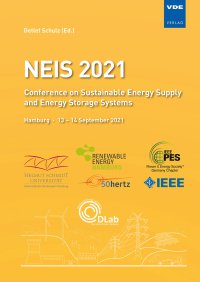Framework for scenario-based studies in the context of converterdominated grids
Conference: NEIS 2021 - Conference on Sustainable Energy Supply and Energy Storage Systems
09/13/2021 - 09/14/2021 at Hamburg, Deutschland
Proceedings: NEIS 2021
Pages: 8Language: englishTyp: PDF
Authors:
Vahle, Daniel; Staudt, Volker (Ruhr-University Bochum, Bochum, Germany)
Abstract:
The methodological framework proposed is driven by the substantial increase of power electronic interfaced generation und load units in electrical power systems. Unlike electrical machines, power electronic assets cannot be assumed to obtain one common physical core character. Each power electronic asset may act differently upon various steady-states and dynamic grid conditions and has to be considered a source of harmonic oscillations. Stability threatening interactions with grid resonances and other active assets are being observed and tried to mitigate. One aspect in this process is the definition of an adequate set of steady-state scenarios for e.g. EMT- or RMS-based studies. For the design of steady-state scenarios, aspects such as asymmetries, distortion and phase- and time shift conditions of multi-frequency quantities in poly-phase systems have to be considered. In preparation for a comprehensive coverage of a given grid section or load by means of significant scenarios, this proposal aims at providing the necessary tools. This framework includes novel definitions for time function characteristics addressing the relation between voltages and currents as well as carefully designed function parameter classes that specifically apply to needs in converter-dominated grids. The resulting terminology bases on conventional wording and is founded upon a recapitulation of conventional source and load classes. The German standard DIN 40110 is used as a reference to guarantee a solid basis. An application is feasible for e.g. control scheme developers, asset manufactures and grid operators pursuing scenario-based investigations, benchmarking, grid and load characterization.


